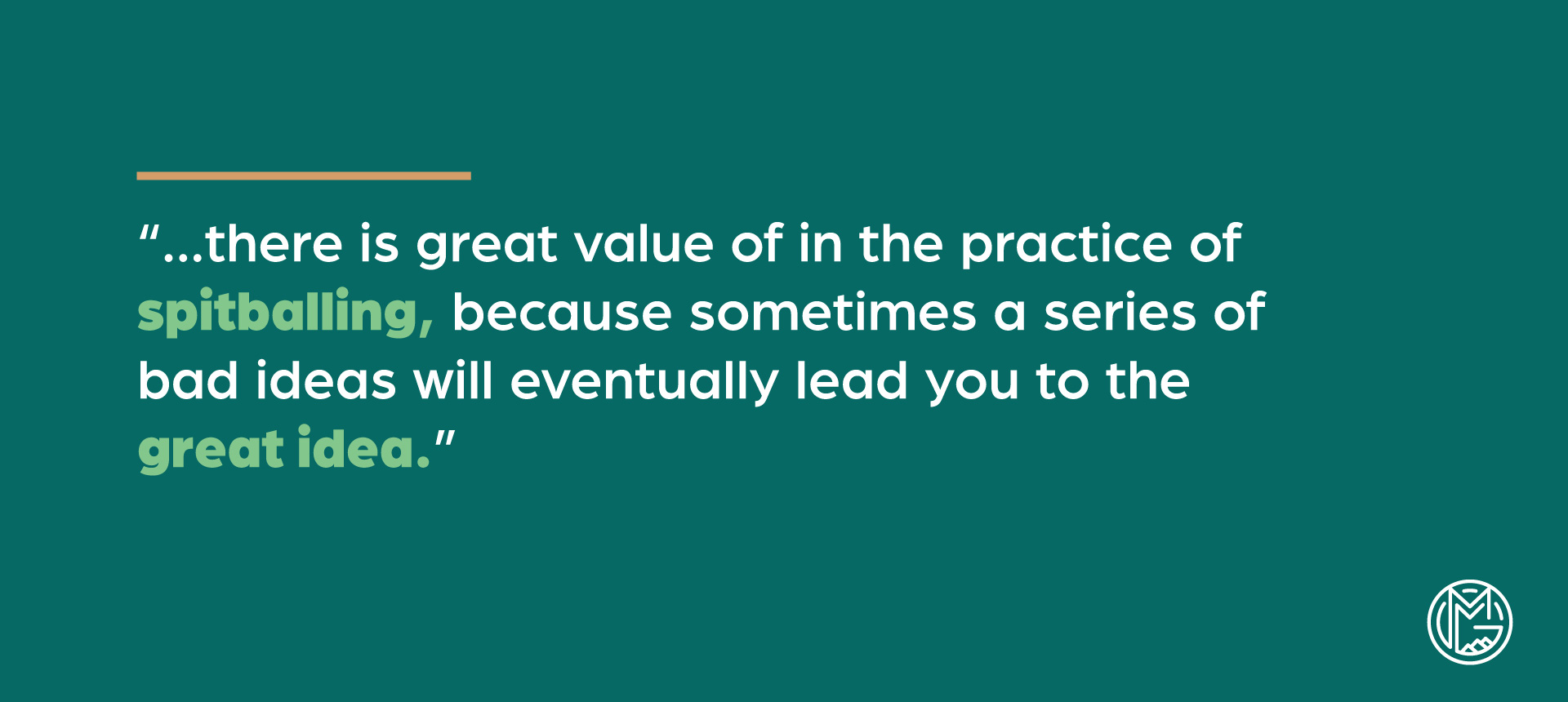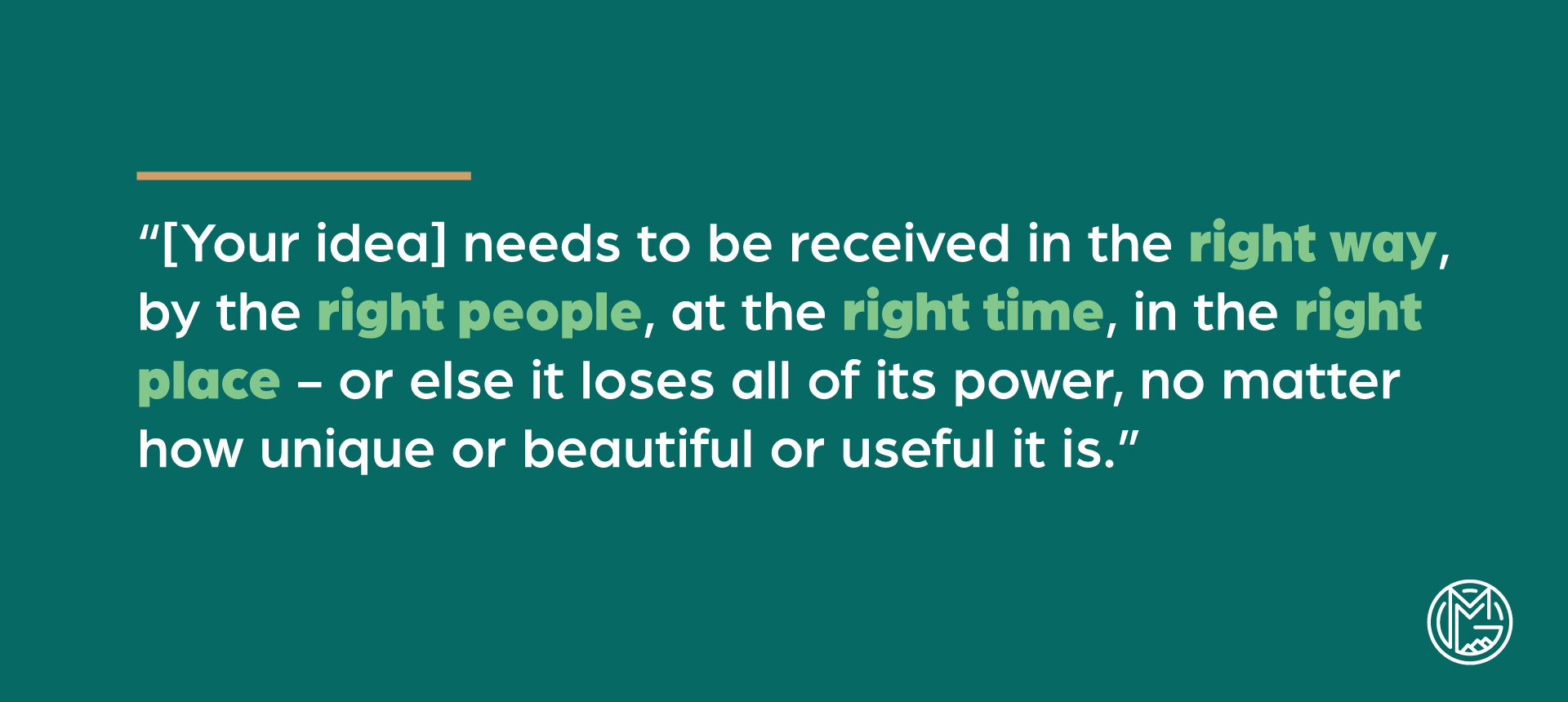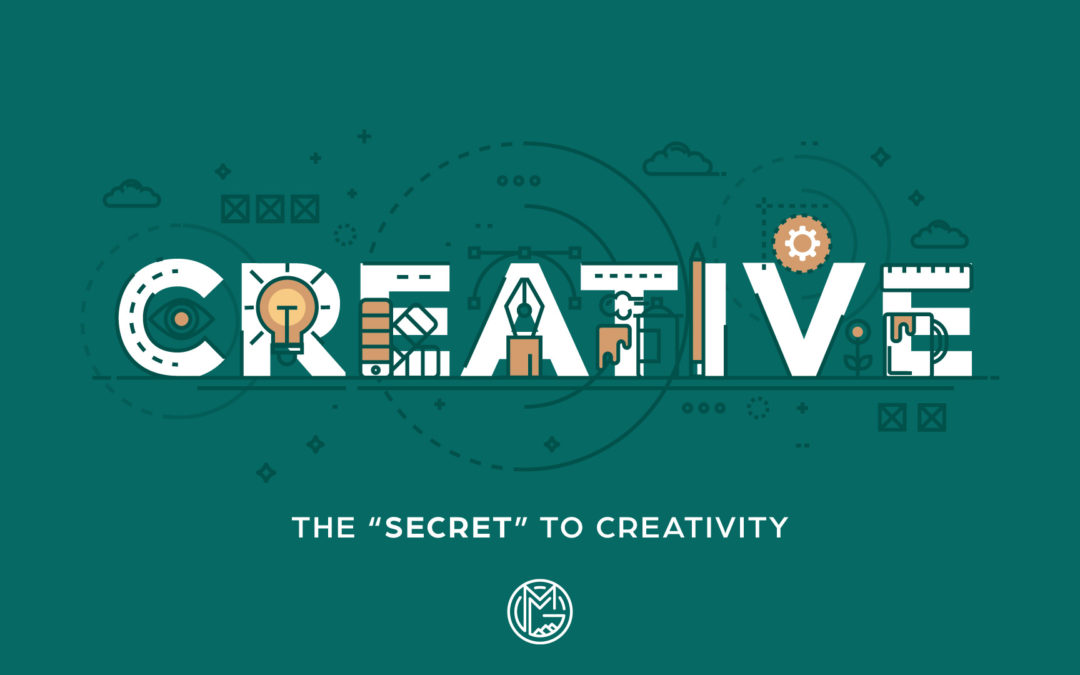When coming up with creative concepts, regardless of platform delivery, we have to think about how to get our viewers to stay engaged long enough to spend that second second watching, consuming our marketing, right? We have one second to capture their attention and push them into that second second… In order to do that, we need to develop strong, unique, and achievable ideas that can be turned into compelling stories, messages, and products.
“Many people believe that creativity is a gift, but we think the creative process is a learned skill like any other — one anyone can learn and get better at.”
Many people believe that creativity is a gift, but we think the creative process is a learned skill like any other — one anyone can learn and get better at. Like anything else, at the end of the day, it requires time, practice, hard work, and the bravery to dream big and try new things. Getting to that “a-ha” moment, that brilliant idea, can sometimes come quickly and easier, or it can be a lengthy, painstaking process that requires great focus, determination, and commitment — and there’s not necessarily one “right” or “perfect” way to get there. However, as people who must exercise their creative muscles on a regular basis — we have a few ideas on how to help get you there, even if being creative is something you don’t feel comes naturally to you. We can’t guarantee you that any of our suggestions will grant you that magical, ingenious idea you’ve been looking for, but these tips and tricks should make it feel a little less painful, whether you’re undergoing this new challenge on your own or collaborating with a group.
A good place to start? Understand that creativity is, indeed, a process. Journalist Jessica Stillman defines them as preparation (which involves seeking inspiration), incubation (where you brainstorm, meditate, and aim to allow ideas to flow naturally and freely), illumination (where, hopefully, you have your a-ha moment), and verification (in which you consider your idea critically to seek potential flaws and also develop strategies for how your idea will be communicated to others). Sometimes it may feel like the best ideas, yours or those of others, are those that are spontaneously generated, that seemingly almost “come out of thin air.” One day you’re just walking along the street, or driving to work, or singing in the shower and suddenly — “Ah-ha!” There it is. The most beautiful, brilliant idea. A revelation. An epiphany. However, while we can’t speak for everyone, we’d guess that even when those moments do happen — and for most, they happen pretty rarely — it’s because deep down, maybe even subconsciously, you actually had been thinking about this issue or problem or topic for a long time already, or at least something related to it, you’d just never seen it in quite this light before or thought of it in exactly this way, at least until now. You were working, thinking, processing for a long time before you got there — you just didn’t realize it. It’s a great feeling when creativity can feel so natural, so organic — but it also needs to be said that we can’t always just wait around until we are hit by inspiration, until the light bulb goes off. We have lives to live and work to do, so sometimes we just need to get started.
“It’s a great feeling when creativity can feel so natural, so organic — but it also needs to be said that we can’t always just wait around until we are hit by inspiration, until the light bulb goes off.”
Now, how do you do that? Before we get ahead of ourselves, let’s delve back into this idea of “preparation” a little more deeply. Stillman primarily talks about “preparation” in terms of seeking out other materials, ideas, information that will inspire us in seeking out good ideas. For this step of the creative process, we like look to our own work – and that of others to see what is already working, what is successful, what is effective. Both in your job and in your personal life, there are most likely products, people, and stories that compel you more than others. Certain ads and services and experiences that you find interesting, intriguing, or entertaining, as well as others that you can barely remember or left a bad taste in your mouth. These emotions and reactions can be applied in practical, productive ways to your brainstorming sessions too. Consider why you felt the way you did. What did you like about these things? What didn’t you like? What keeps you coming back to the same brands? Why?
“…consider what kind of an idea you’re looking for, and why?”
Equally important in the brainstorming process, however, is to consider what kind of an idea you’re looking for, and why? Before you do anything else, we think you should aim to decide the goal or purpose of your project or brainstorming session. What problem are you trying to solve? What are you trying to achieve? What result or outcome do you hope to accomplish through this? Asking the right questions won’t always get you the right answers, but at least will get you started in the right direction.
If at any point in the process you’re feeling stuck, we’d highly recommend considering the possibility of collaboration. Even if the task at hand isn’t one that would normally call for (or be thought of) as a group effort, inviting the thoughts and perspectives of others can be super helpful to advance the creative process, even if it can be a little intimidating at times. In our minds, generally the rule is, the more heads, the better. No matter how creative or intelligent you are, bouncing ideas off others can often lead you to a much better idea than you ever could have come up with on your own. Even if your collaborators are completely separated from the project at hand, or don’t know much about the kind of work you’re doing, sometimes fresh eyes and an outside perspective can be more helpful than someone who is too “in it” to give the task an innovative or objective approach.
While you’re brainstorming with your collaborators, it’s essential to stress the idea that while some ideas are better than others, no idea is “wrong.” Right now, you’re just trying to come up with as many ideas as possible as you can get the ball rolling. Participants — including you — need to feel free of the fear of judgement and free of limitations in order to be comfortable voicing their thoughts and to come up with the best, most creative ideas. The first idea is rarely, if ever, the best idea and even if some of the ideas you come up with at first feel silly or impractical, there is great value of in the practice of “spitballing,” because sometimes a series of “bad” ideas will eventually lead you to the right one.

What may also be a valuable tactic to employ is finding a way to document and represent your ideas in a visual or tangible way — such as making a list on whiteboard or creating vision board with images that represent or influence your project. Depending on the nature of your project, the ideas you’re working with may feel very abstract, and taking a moment to give them a sense of realness can help spur your imagination, as well as make it easier later on to judge their actual efficacy.
Finally, since we’re marketers at heart, let’s talk about how the marketing perspective figures into creative projects. Like we mentioned earlier, creativity is a process, and while you don’t want to feel limited by notions of practicality or efficacy early on in the brainstorming process — eventually, like with all things, you will have weed out the weaker ideas from the stronger ones, and in the process, consider their actual real-world application — whether your idea is actually realistic and viable, and whether or not it will actually succeed in achieving those intended outcomes you set in the beginning. Alongside this, it is crucial that, anytime a project has a business element to it, you consider not just whether an idea seems “good” to you, but whether it will seem “good” to your potential customers — the people who will be consuming and engaging with your idea — whatever that happens to be. Step into their shoes, get into their headspace, and really try to see the situation from their perspective. It might be easy to see, for example, why a certain product or service or business is valuable, when you already work for or very closely with the company in question. It is important to consider the questions your potential customers will ask. Why should I care about this? How is it relevant to my life? How will this help me or make my life better in some way? Who is the person or people selling me this thing, and what are their values, beliefs and priorities? Will they treat me with the respect and attention I deserve?

Now, how can you communicate your idea so that it answers these questions for the consumer? How you go about that aspect of bringing your idea out from the shadows and into the world is equally, if not more, essential to its success as the concept itself. It needs to be received in the right way, by the right people, at the right time, in the right place — or else it loses all of its power, no matter how unique or beautiful or useful it is. It needs to reach the right audience, and to connect with them in order to have its desired effect. As explains psychologist Scott Barry Kaufman, “Some of the greatest creative ideas of all time can easily be lost because they’re not packaged in the right way or consumable.”
Asking these kinds of questions may inspire new ideas, new strategies, and new solutions — or it may be the final step in narrowing your focus on the most effective direction for your project. Again, there’s not necessarily one perfect, easy way to get there. In fact, the creative process can often be messy, lengthy, and complex, no matter how organized or strategic you try to be about it, so if you feel there’s a better alternative, it could be worthwhile to follow your intuition and try that method too. However, if you’re feeling stuck, uninspired, or unsatisfied with your ideas so far, we hope we’ve provided you with some tools on how to navigate a way forward.

Mountain Mojo Group is located in Flagstaff, Williams, the White Mountains, and Page, Arizona and provides top-quality marketing solutions and design! Our team works with small businesses all across the state of Arizona, providing a variety of marketing and design services including, social media management, photography, videography, strategy, web design, graphic design, SEO, and paid search engine marketing. Our team of creatives is ready to tackle your next marketing project. Contact our team today at (928) 440-5301 or stop by one of our offices located throughout northern Arizona.

